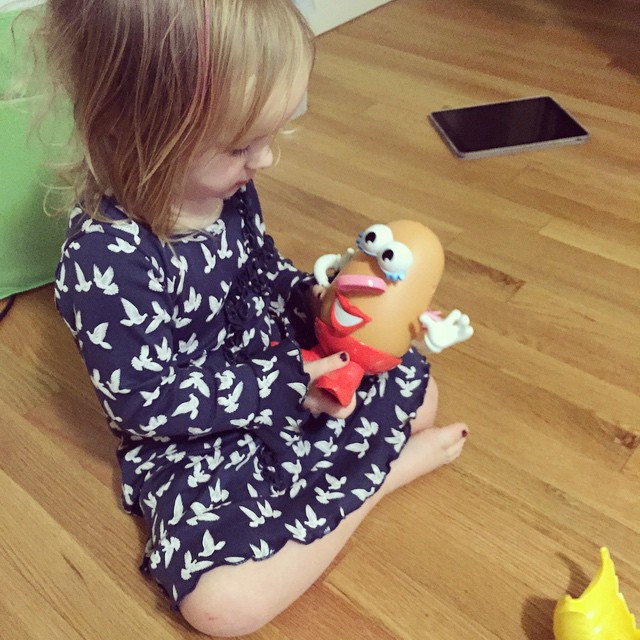Teaching Your Preschooler to Discriminate
 Okay, I’ll admit it up front. I chose the word “discriminate” on purpose. This word gets a lot of play in the press right now. Discrimination between people based on color or belief is bad. However, speech therapists use it to describe something different and every child needs to learn it. Another meaning of “discriminate” is to “perceive the difference in or between” or “differentiate”. This form of the word is what we want to teach our preschoolers.
Okay, I’ll admit it up front. I chose the word “discriminate” on purpose. This word gets a lot of play in the press right now. Discrimination between people based on color or belief is bad. However, speech therapists use it to describe something different and every child needs to learn it. Another meaning of “discriminate” is to “perceive the difference in or between” or “differentiate”. This form of the word is what we want to teach our preschoolers.
Awhile ago, I was working with a child who couldn’t choose when presented with a lot of choices. We were playing with Mr. Potato Head . When presented with two choices, like “red shoes” and “blue shoes," she could identify and choose the one she wanted. However, I wanted her to learn to discriminate when the choices were greater.
I showed her the box with a picture of all the parts and asked what piece she wanted next. She held up her finger and wandered around the picture awhile before putting it down. When I asked if that piece was what she wanted she would say “No." The visual stimulation of so many parts was too much. However, I could tell by watching her that it wasn’t an overwhelming situation for her. She was ready to learn.
I would help her place her finger on a piece in the picture and ask her “Do you want the hands?” She would say, “No”. So I would guide her to the eyes and ask, “Do you want the eyes?” “No.” I continued to guide her until she said “Yes.” I would then say “You want the ears” to reinforce her choice. Over time she learned to visually scan the picture and choose which piece she wanted. Eventually, she was able to select it on her own.

I would try playing this game with your child as soon they can choose between two pieces selected for them and when they recognize both the name of the piece and picture. The best way to know if your child is ready is to try it and see if they like doing it. If you don’t have a picture of the pieces, use a phone or tablet to take a picture. This is one of the best uses for my iPad.
It is very important to make it a game. Always take turns. Let them see how you do it before they try it. Try letting them guide your finger and asking you the question. Alternate back and forth between the two of you. It makes it into a fun activity instead of a drill. Build on the skills as they improve, such as not guiding their finger or using more complex sentences.
Skills this game reinforces:
- Discriminating one piece from a group.
- Matching a picture to the actual piece.
- Waiting for turns and not just grabbing. (For impatient children, take your turn fast.)
Lays foundation for other skills:
- Categorization.
- Early reading.
- Language building.
There are more toys that work for this game than Mr. Potato Head. What are some of your favorite toys that have many pieces that would be useful for teaching discrimination?
Have Questions?
Let's talk.
We hate SPAM. We will never sell your information, for any reason.


